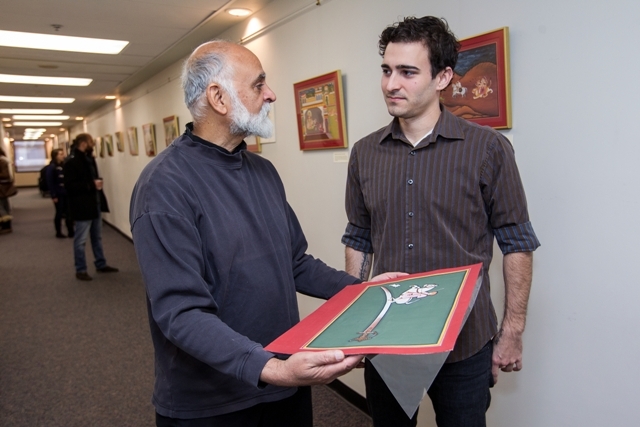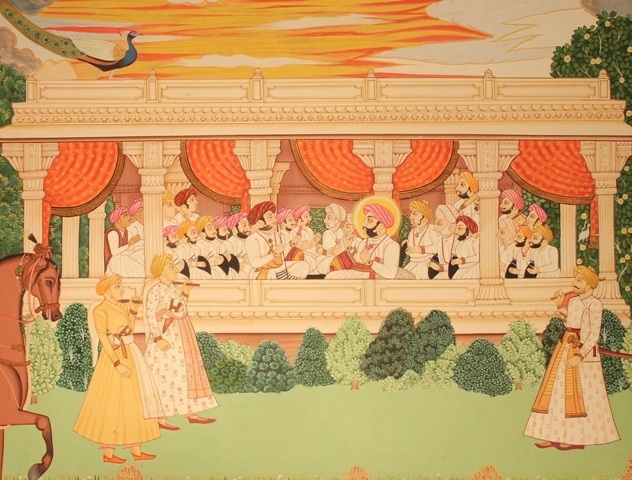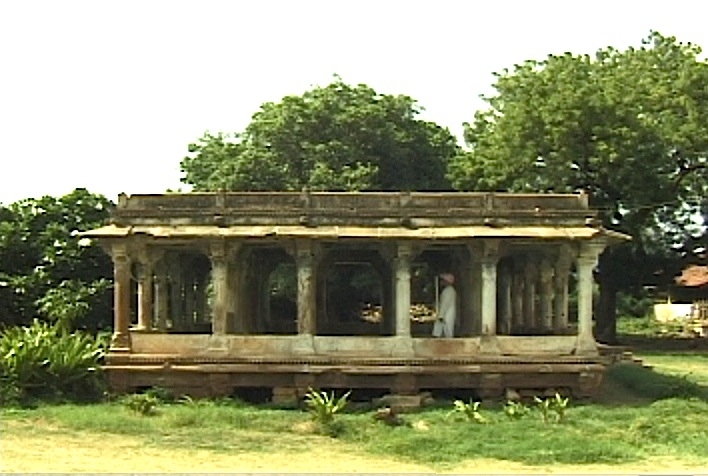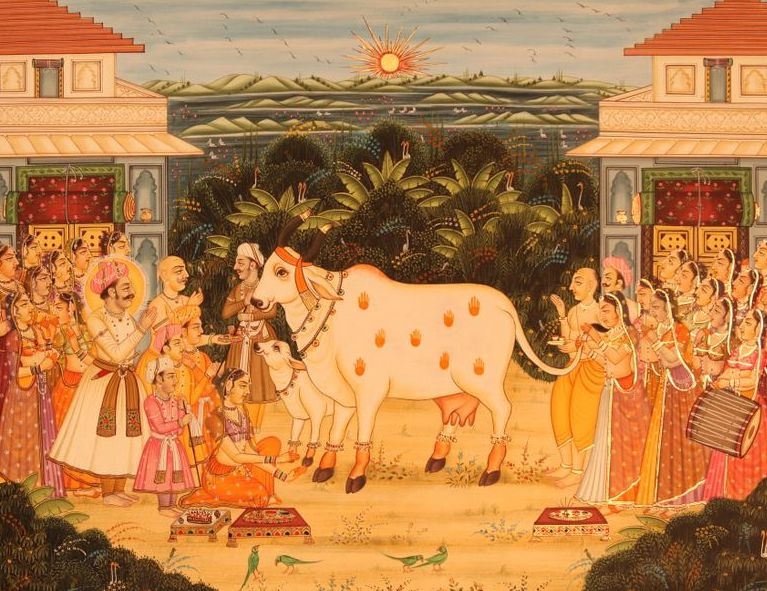Exhibit of Indian miniature paintings represents 12 years of collaboration
It started out as a short trip to India in the summer of 2001 by a few of Jayasinhji Jhala's students to help out in the professor's home town in the aftermath of a major earthquake.
But not only did it blossom into a full-fledged study abroad experience, the endeavor also led to a unique exhibit of contemporary Indian miniature paintings from Jhalavad, India, “Painting Story of the Floating Desert,” on display at the Center for the Humanities at Temple (CHAT) through April 30.
The exhibit is the outcome of a long-term collaboration between Jhala, Temple anthropology students and private artists that has led to a new type of contemporary painting marrying digital techniques with traditional Indian styles.
"The paintings are the culmination of over 10 years of sustained and often rigorous collaboration among my students," said Jhala, associate professor of anthropology. “During this time the project has of course had ups and downs and evolved in several directions, but I am grateful to see many of the pieces come together in this exhibit.”
In the 12 years since the first group of Temple students set out for the medieval desert town of Dhrangadhra, Gujarat, more than 120 students have participated in Temple's Summer Program in India. Each summer, 10 to 15 students pursue experiential independent study projects under Jhala's supervision in areas ranging from performance art to jewelry making to public health, with several students each year picking up on and continuing an ongoing project of Jhala’s: to reveal the untold story of the Jhala warrior clan through visual representation.
As a visual anthropologist, Jhala's work focuses on the production, distribution, reception, circulation and transformation of visual forms, both within and across communities and cultures. Indeed, Temple's Department of Anthropology has long been known both nationally and internationally for its specialization in visual communication. The university is home to one of the oldest visual anthropology programs in the country and is the only one to offer an Anthropology of Visual Communication track for undergraduates.
Over the years, the ethnographic study of the Gujarat region conducted by Jhala and his students has included a number of documentary films. One summer, Temple student Rhett Grumbkow (CLA 2006) had an idea: Instead of re-enacting battle scenes and other moments of historic importance, Grumbkow wanted to create paintings in a traditional miniature style to provide visual elements for his film, Speaking Stones and Singing Stones.
Miniature paintings are among the most complex aesthetic expressions in the history of visual arts around the world. Through intricate attention to detail and a tendency toward whimsy, this style of painting often is used to portray complex visual narratives that refer to historical events.
Grumbkow and research partner Katharine Mangels, a Tyler student, set out to collect images intended to help authentically reconstruct historic and mythic events in paintings. They merged photographs of architecture with images of rich landscapes and then digitally populated the scenes with painted characters wearing colorful turbans or regalia.
Jhala worked with artists in North India to delicately hand paint the sketches in the traditional Rajput/Mughal style. For contemporary artists, painting in an ancient miniature style was definitely stepping out of their comfort zone, said Jhala.
David Nalin, M.D., one of the top five collectors of Indian art in the U.S. and a long-time friend of Jhala, introduced the exhibit at an opening reception. "The paintings borrow classical images and themes from local history, events, legends and myths and even the architecture of the area to reflect the story of the Royal Jhala family from 1100 AD to the present," he said. “Though contemporary, the paintings represent the re-creation of a tradition that has waned.”
In all, more than 60 paintings have been completed, although only about 15 are shown in the CHAT exhibit. Curator Annabelle Rodriguez, a graduate fellow in anthropology at Temple, is working on plans to show the exhibit at other institutions around the country. According to Jhala, plans also are in the works to develop a book or catalogue of the paintings to document the images and the process.
For Grumbkow, the project has been about expanding horizons.
"For me the project has been much more than an academic one,” he said. “It has been about immersing myself in the past, learning to be a cultural mediator, dedicating myself to a subject and building enduring friendships."



